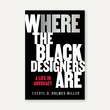Turning a design vision into reality involves a lot of moving parts and collaboration from people with vastly different strengths, knowledge, and perspectives. It’s a team effort with owners, developers, contractors, and architects working together. The all-knowing architect is a myth. Everyone needs to align their knowledge, expertise, and work styles seamlessly towards common goals.
For us, that means integrating design and delivery from the get-go to facilitate proactive problem-solving to tackle issues before they arise, with the support of advanced communication tools. This level of collaboration and precision not only enhances the building process but also ensures results that benefit everyone involved, from the client to the community. We’re committed to delivering excellence together. A generation ago, you might have heard someone call that “synergy,” but today the term “collaboration” has become more expressive of this idea that different people can contribute different ideas to elevate the quality of a unified result.
Understand what needs to happen
My architecture firm, MG2, recently designed a Costco wholesale facility outside Mexico City that caps a landfill and, on its roof, hosts a soccer field, basketball courts, and native vegetation. This provides amenities and melds with the local flora and fauna. Just a single one of those purposes would have required an intense degree of collaboration between us, our client Costco, city officials, and a dozen others. When you put them together, it seems as if the complications would have multiplied to an impossible degree. Yet they didn’t because of one fact: Collaboration is never more complicated than understanding what needs to happen, for whom, and why—then setting a goal and making it happen with a team
It’s the basis of our approach at MG2, and at its core is a hidden power.
We all know that actions prompt equal and opposite reactions thanks to Isaac Newton, and I think there’s something deeper and more basic worth investigating here. That is, the power of interactions—the influence two things undergo in relation to each other—not just in response to each other. The benefits of these interactions are irreplaceable in the design process and how we work. Architects design for human wellness and building efficiencies, and even beauty, yes, but we also design for human interactions. Our teams are always asking how a space or a place can enhance all the ways we live, work, play, learn, eat, and shop together.
Digital interactions have far outpaced out number of in-person interactions, but we still occupy real places and spaces when we have these digital interactions—cafe tables, shops, school cafeterias, office scrums, park benches, and airplane seats. That’s one of the reasons why I know AI won’t rob architects of their jobs—because people still occupy space and need their spaces to be responsive, healthy, inspiring, and beautiful—no matter what they’re doing. The quality of the space directly impacts the quality of collaboration.
Whichever word will replace “collaboration” in the boardroom for the next generation won’t replace the specific skill that architects bring to every project—a passion for understanding positive interactions, and the spaces they require.
Mitch Smith, AIA is CEO and chairman of the global architecture and design firm MG2.









No comments